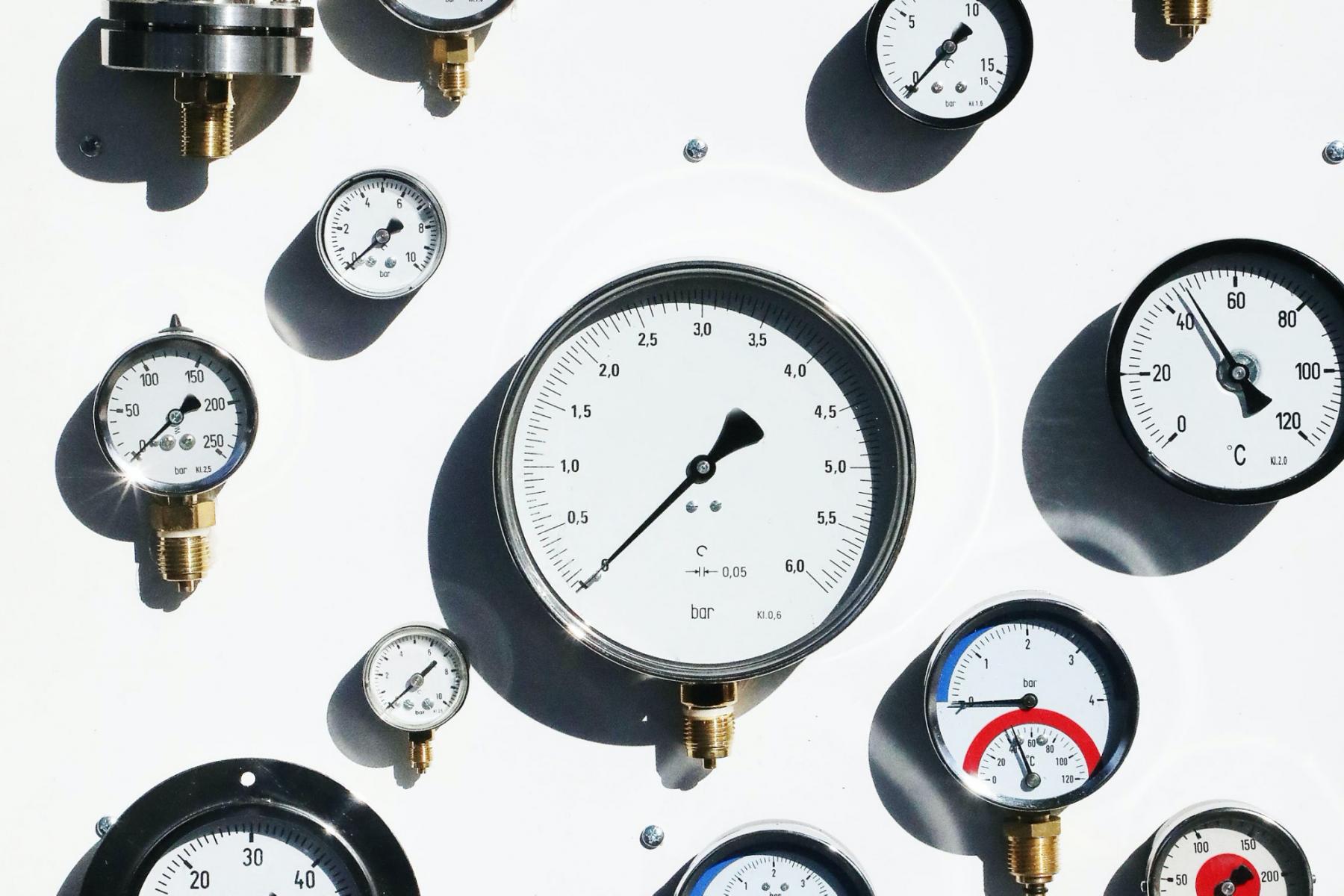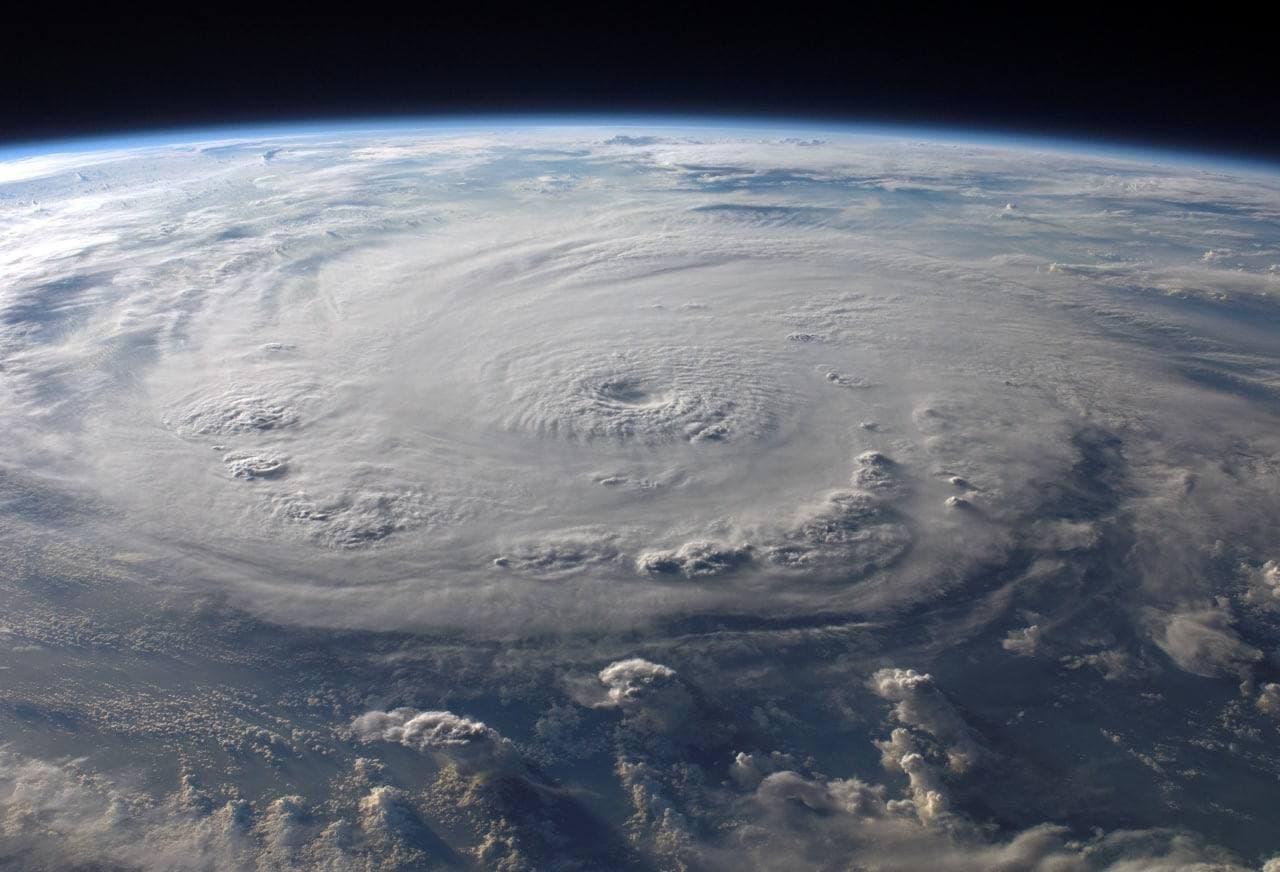
What makes atmospheric pressure high and low
Atmospheric pressure is the force with which the air column presses on the surface at a particular place on Earth. In this new lesson of the Windy.app Meteorological Textbook (WMT) and newsletter for better weather forecasting you will learn more what makes atmospheric pressure high and low.
What makes pressure high or low?
Atmospheric pressure is the pressure of the weight of air at some point. It may press hard or it may press weakly. What does it depend on?
The first factor
That column may have a lot of atmospheric air molecules in it, or not. The more molecules get into the column, the more mass the column will have, and the more that mass will press on the surface. That is, the pressure depends on the number of molecules in the atmospheric column. At the same time, almost all the molecules of atmospheric air are at the bottom of the atmosphere, i.e. at the Earth’s surface (the first 10 km), so the pressure depends on what is happening in this layer.
If the air is cold, its molecules are very close to each other. In this case there will be a lot of them in the atmospheric column and they will press strongly on the surface (hence the pressure will be high). When the air is warm, its molecules are far apart, so few of them fit in the column, and the pressure is low. However, when the air near the very surface (where we are) is cold, at an altitude of several kilometers it can be warm, and then the pressure can be low.
When we go up into the mountains, the height of the atmospheric column above us constantly decreases, causing the pressure for us to continually decrease. That is, pressure is not only related to temperature, but it is also very dependent on the altitude of the place. Both air temperature and altitude determine the mass of the atmospheric column, and it affects pressure. But is the mass of the column the only factor?

Different types of barometers for measuring atmospheric pressure. Photo: Slobodan Miljevic / Getty Images via Wired
The second factor
In the atmospheric column, air is not stable; it is constantly moving both horizontally (moving from one column to another) and vertically (within one column, air can descend or rise). What happens when the air descends? The movement of air creates additional pressure on the surface.
You may feel this pressure on yourself, for example, when the wind blows in your face, preventing you from walking freely. The pressure of the horizontal jet of air on you can be so strong that you won’t be able to move or may even be blown backwards. This wind pressure on the sail makes the boat move in the direction of the wind. Both the sail and the pedestrian in this case are similar to the surface with the air descending from above.
So, if the air comes down from above, it presses down on the surface, thus increasing the pressure of the atmosphere on the surface. If there is no vertical movement in the air, only the mass of the atmospheric column determines the pressure, and if the air blows upward from the surface, then... you’ve probably already guessed that the pressure will decrease in that case!
Where the pressure is low and where it is high?
We’ve already figured out that pressure is low in the mountains, but also where the air is warm and where it rises from the surface. The latter feature is exactly what we see in cyclones. In tropical cyclones, because a lot of heated air rises quickly from the ocean, pressure can drop to record lows. Such a record belongs to Hurricane Jimbert, observed in the Pacific Ocean in September 1988 — pressure in the center of this tropical cyclone reached 880 hPa (with a norm of 1013 hPa).

Extremely low pressure in Hurricane Jimbert. Photo: Pixabay
Pressure on a plain will be higher than in the mountains. It will be even higher if the air above us is cold, as well as where the air descends to the surface — as in anticyclones. The record high pressure was observed in December 1968 and belongs to the Siberian anticyclone — 1083 hPa.
What does the pressure forecast tell us?
The fact that air has weight was recognized in the middle of the 17th century. Then people thought up how to measure this weight, and began to observe how it may change daily in each particular place. Soon they noticed that often shortly before it started to rain, the pressure began to drop, and if the pressure rose, it usually did not rain. Thus the first predictions of precipitation by pressure change were born. This pattern is easy to explain. If the pressure drops, the air is likely to rise from the surface, and if the air rises, if there is moisture in the air, clouds will form and precipitation will fall from them. When the pressure rises, the air goes down, and that does not contribute to cloud formation.
What else does the pressure say? If the pressure is predicted to be low, there will most likely be clouds in the sky and this will create cooler weather in summer, but in winter it will make it warmer. If the pressure is high, it will be hot in summer and frosty in winter.
In short, if the pressure drops, the weather will “worsen”, if the pressure rises, it will “improve”. Since pressure is closely related to vertical air movement, it can tell us how strong vertical air currents are expected to be, whether there will be precipitation, how hot or cold it will be, and this will help to choose the type of outdoor activities. But you should always remember that these are general weather patterns related to pressure, and there may be various exceptions. Therefore, we recommend not limiting yourself to one parameter to take stock of the weather, but look at the full range of indicators!
Text: Windy.app team
Cover photo: Miguel-a-Amutio / Unsplash
You will also find useful
Explore different types of contour lines. Relief, atmosphere, ocean, and more
How atmospheric pressure works
Latest News
Professional Weather App
Get a detailed online 10 day weather forecast, live worldwide wind map and local weather reports from the most accurate weather models.
Compare spot conditions, ask locals in the app chat, discover meteo lessons, and share your experience in our Windy.app Community.
Be sure with Windy.app.



